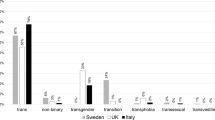Abstract
Using our own experiences in attempting to ‘do’ public criminology in the wake of a violent sexual assault on our campus, we offer a critique of the emerging public criminology framework. Focusing specifically on tensions between fact and emotion and representations of expertise in the news media, we argue for a greater respect for emotional responses to crime in moving the public criminology agenda forward. We suggest that if public criminology sets as its goal educating the public about crime with an eye towards injecting a counter/critical discourse into ‘get tough’ crime control policies, then public criminologists need to recognize and take seriously the public’s emotions rather than negate them. Drawing on the work of Ahmed (The cultural politics of emotion. Routledge, London, 2004), we suggest that the role of the expert is not to simply inform citizens of the ‘facts’ about crime, but to establish—through emotions—the relationship between themselves and the imagined criminal Other (Young in Imagining crime: Textual outlaws and criminal conversations. Sage Publications, London, 1996). Thus, alongside trying to convince the public to be more ‘rational’ when it comes to crime, critical criminologists must start to accept people’s fear and anger as legitimate reactions and try to redirect these emotions toward more productive ends.
Similar content being viewed by others
Notes
To protect this person’s identity, we have chosen to assign our colleague the pseudonym, ‘Mr. John Smith’.
However, the Jane Doe case in Toronto would suggest that police may not issue alerts even when there is a suspicion of a serial rapist (see Doe 2004).
For a discussion on the importance of ‘telling a good story’ when presenting issues of crime and criminal justice see Feilzer (2009).
References
Ahmed, S. (2004). The cultural politics of emotion. London: Routledge.
Barak, G. (1988). Newsmaking criminology: Reflections on the media, intellectuals, and crime. Justice Quarterly, 5(4), 565–587.
Barak, G. (2001). Newsmaking criminology. In E. McLaughlin & J. Muncie (Eds.), The sage dictionary of criminology (pp. 190–191). London: Sage.
Barak, G. (2007). Doing newsmaking criminology from within the academy. Theoretical Criminology, 11(2), 191–207.
Becker, H. (1963). Outsiders: Studies in the sociology of deviance. New York: The Free Press.
Best, J., & Horiuchi, G. T. (1985). The razor blade in the apple: The social construction of urban legends. Social Problems, 32(5), 488–499.
Chesney-Lind, M. (2006). Patriarchy, crime and justice: Feminist criminology in an era of backlash. Feminist Criminology, 1(1), 6–26.
Cole, S. (2009). A cautionary tale about cautionary tales about intervention. Organization, 16(1), 121–141.
Colvin, R. (2010) “Obama says showing anger won’t solve BP oil spill” (online article) in Reuters. Retrieved June 9, 2010, from http://www.reuters.com/article/idUSTRE65267V20100604.
Currie, E. (2007). Against marginality: Arguments for a public criminology. Theoretical Criminology, 11(2), 175–190.
Damasio, A. (1994). Descartes’ error: Emotion, reason and the human Brain. London: Penguin.
De Hann, W., & Loader, I. (2002). On the emotions of crime, punishment and social control. Theoretical Criminology, 6(3), 243–253.
Doe, J. (2004). The story of Jane Doe: A book about rape. Toronto: Vintage Canada.
Elias, N. (1994). The civilising process. Oxford: Blackwell.
Ericson, R., Baranek, P., & Chan, J. (1991). Representing order: Crime, law and justice in the news media. Toronto: University of Toronto Press.
Feilzer, M. (2009). The importance of telling a good story: An experiment in public criminology. The Howard Journal, 48(5), 472–484.
Frijda, N. H. (1986). The emotions. Cambridge: Cambridge University Press.
Garland, D., & Sparks, R. (2000). Criminology, social theory and the challenge of our times. The British Journal of Criminology, 40(2), 189–204.
Gieryn, T. (1995). Boundaries of Science. In S. Jasanoff, G. Markle, J. Petersen, & T. Pinch (Eds.), Handbook of science and technology studies (pp. 393–443). Thousand Oaks, London, New Delhi: Sage Publications.
Goffman, E. (1961). Asylums: Essays on the social situation of mental patients and other inmates. New York: Doubleday.
Hannah-Moffat, K. (2001). Punishment in disguise: Penal governance and federal imprisonment of women in Canada. Toronto: University of Toronto Press.
Hooks, B. (1989). Talking back: Thinking feminist, thinking black. London: Sheba Feminist Publishers.
Jackson, K. (2007). Rapist expected to strike again: University attacker’s violence ‘will get worse and worse’, says criminology professor. In: The Ottawa Sun. Retrieved May 28, 2008, from http://cnews.canoe.ca/CNEWS/Canada/2007/09/04/4468405-sun.html.
Jagger, A. M. (1992). Love and knowledge: Emotion in feminist epistemology. In A. Garry & M. Pearsall (Eds.), Women, knowledge and reality: Explorations in feminist philosophy (pp. 129–156). London: Routledge.
Jasanoff, S. (1995). Science at the bar: Law, science, and technology in America. Cambridge, MA: Harvard University Press.
Katz, J. (1987). ‘What makes crime ‘news’’? Media Culture and Society, 9, 47–75.
Katz, J. (1999). How emotions work. Chicago: University of Chicago Press.
Schoenfeld, H. (2010). Mass incarceration and the paradox of prison conditions litigation. Law & Society Review, 44(3/4), 731–767.
Smith, D. (1992). Sociology from women’s experience: A reaffirmation. Sociological Theory, 10(1), 88–98.
Valverde, M. (2006). Law and order: Images, meanings, myths. New Brunswick, NJ: Rutgers University Press.
Visweswaran, K. (1994). Fictions of feminist ethnography. Minneapolis: University of Minnesota Press.
Wolf, M. (1992). A thrice-told tale: Feminism postmodernism, and ethnographic responsibility.. Palo Alto: Stanford University Press.
Woodward, K. (1996). Global cooling and academic warming: Long-term shifts in emotional weather. American Literary History, 8(4), 759–779.
Young, A. (1996). Imagining crime: Textual outlaws and criminal conversations. London: Sage Publications.
Author information
Authors and Affiliations
Corresponding author
Rights and permissions
About this article
Cite this article
Mopas, M., Moore, D. Talking Heads and Bleeding Hearts: Newsmaking, Emotion and Public Criminology in the Wake of a Sexual Assault. Crit Crim 20, 183–196 (2012). https://doi.org/10.1007/s10612-011-9134-z
Published:
Issue Date:
DOI: https://doi.org/10.1007/s10612-011-9134-z




